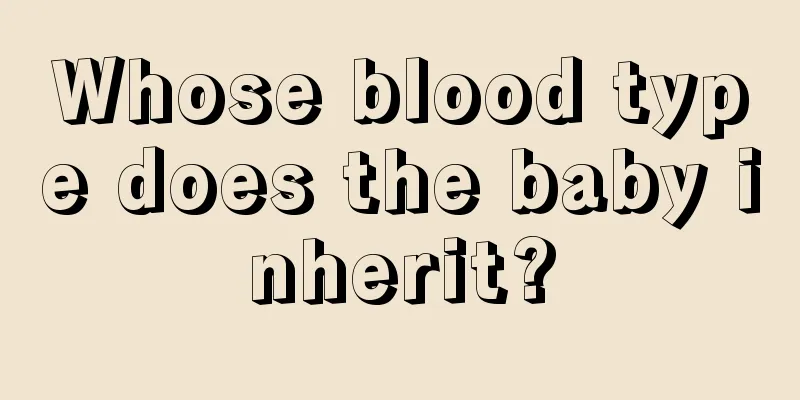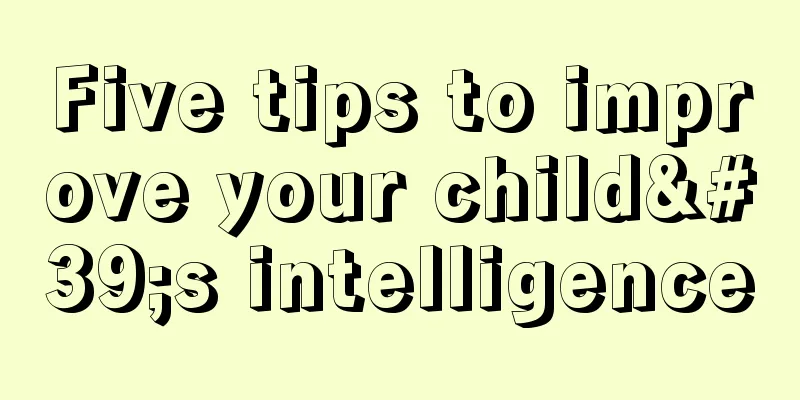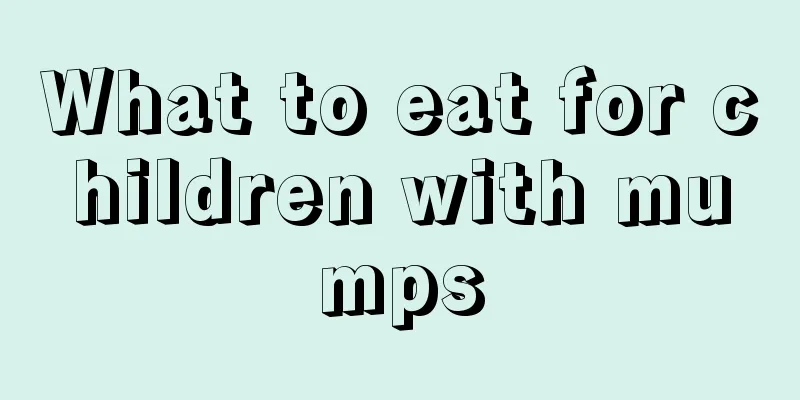Whose blood type does the baby inherit?

|
Everyone has a blood type, which is mainly determined by genetics. Generally speaking, the parents' blood type determines the child's blood type, which is inherited through a certain combination. So, the baby's blood type is affected by two aspects, not just inherited from one person. Below, we will analyze in detail the relevant knowledge about baby's blood type inheritance. 1. Overview of blood type In a broad sense, blood type refers to the antigen types of red blood cells, white blood cells, platelets and various plasma proteins in the blood of higher animals and humans. In a narrow sense, blood type refers only to the type of red blood cell antigens. The latter is the commonly used definition of blood type. In 1924, German scholar F. Bernstein proved that ABO blood types are controlled by three multiple alleles, which pioneered the study of blood type inheritance. Blood type inheritance is the theoretical basis for clinical blood transfusion and organ transplant matching. As a genetic trait, blood type is rarely affected by the environment and is therefore an excellent genetic marker that can be used for paternity testing, disease association analysis, and human evolution research. Since Austrian scholar Landsteiner discovered blood types in 1900, people have considered the term "blood type" to be a genetic trait of the human body. With the development of medical science, this concept can no longer fully express the meaning of blood type. Because today's blood type antigens are not only limited to the blood type antigen system of red blood cells, but also widely involve various parts of the human body, that is, the genetic polymorphism exhibited by the antigen-antibody system of various cells (blood cells, tissue cells) and various body fluid components of the human body. 2. Blood Type and Genetics Generally speaking, blood type remains unchanged throughout life. Human blood types are usually divided into four types: A, B, O and AB. Blood type is inherited through chromosomes in cells. Human cells have a total of 23 pairs of chromosomes, each pair of chromosomes consists of two single chromosomes, one from the father and the other from the mother. The main component of chromosomes is deoxyribonucleic acid, commonly known as DNA, which determines genetic traits and functions. DNA can be divided into many small segments, each of which has specific genetic traits and functions. These small segments are called genes. Small fragments of DNA that are located at the same position on the two chromosomes in a pair of chromosomes are called alleles. The gene locus of the ABO blood group system is on the 9th pair of chromosomes. Human ABO blood type is controlled by three genes, A, B, and O, but there are only two ABO system genes on the 9th pair of chromosomes in each human cell, namely a pair of alleles among AO, AA, BO, BB, AB, and OO, among which A and B genes are dominant genes, and O gene is a recessive gene. 3. Evolution of blood types Ape red blood cells have ABO antigens, serum contains corresponding antibodies, and saliva contains A, B, and H substances. The red blood cells of baboons and most monkeys do not have ABO antigens, but there are A, B, and H substances in their saliva. Lewis substances are found in the saliva of apes, baboons and monkeys. These facts indicate that in the process of evolution, the ABO antigens in saliva appeared first, and the ABO antigens on red blood cells appeared later. Ape red blood cells have the MN blood type. Guinea pig anti-rhesus monkey red blood cell serum can be used to detect a human LW antigen related to the Rh antigen. The red blood cells of apes, baboons and many monkeys have LW antigens. Monkeys do not have Rh antigens, but all apes have some form of D antigen and C antigen, and the E/e series antigens are only found in humans. This also shows that the LW gene is older than the Rh gene in evolution; various Rh genes also gradually appeared during the evolution process. Among many species of monkeys, dogs, mice and other animals, only gibbons have the Xg2 antigen, and it also appears to be X-linked. Gibbons are not as closely related to humans as other apes, but they share the Xg2 antigen with humans, which is still difficult to understand. |
>>: Whose IQ does the baby inherit?
Recommend
How to treat nephrotic syndrome in children?
There are still many hidden health risks for chil...
The child's eyes are red and have eye mucus
As a qualified parent, you should pay more attent...
What to do when blisters appear on children's feet
I believe everyone is familiar with the symptom o...
What are the dietary precautions for young children?
In our lives, compared with adults, children'...
How tall is a seven month old baby?
Babies are the greatest source of happiness for a...
What are the effective solutions for baby's airsickness?
Airsickness and motion sickness are common in lif...
Clinical manifestations of Helicobacter pylori in babies
Helicobacter pylori is a chronic source of infect...
Three-year-old baby has heart murmur
If you find that your three-year-old baby has a h...
Causes of respiratory infections in children
Children's respiratory tract infections may b...
What causes blisters on children's bodies?
The skin of infants and young children is delicat...
What are the dangers of children's tooth fillings killing nerves?
Children always like to eat some sweets, which is...
My baby's buttocks are red, what should I do?
We all know that newborn babies have relatively p...
What should I do if my 10-month-old baby refuses to eat milk powder?
It is difficult to take care of a baby who is bor...
Causes of excessive hair loss in children
Hair loss is not only a phenomenon that is eviden...
How to treat sore throat in children?
Sore throat is a common clinical disease. Not onl...









